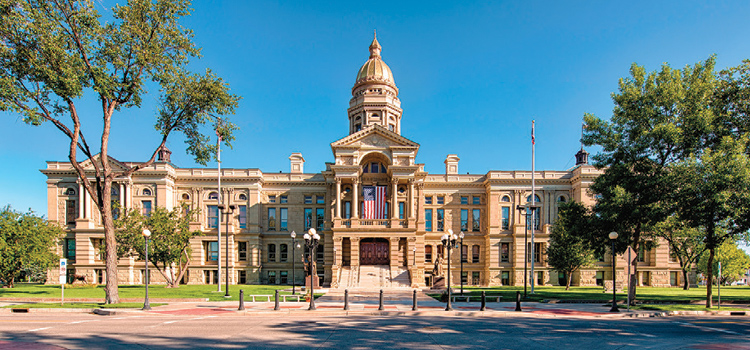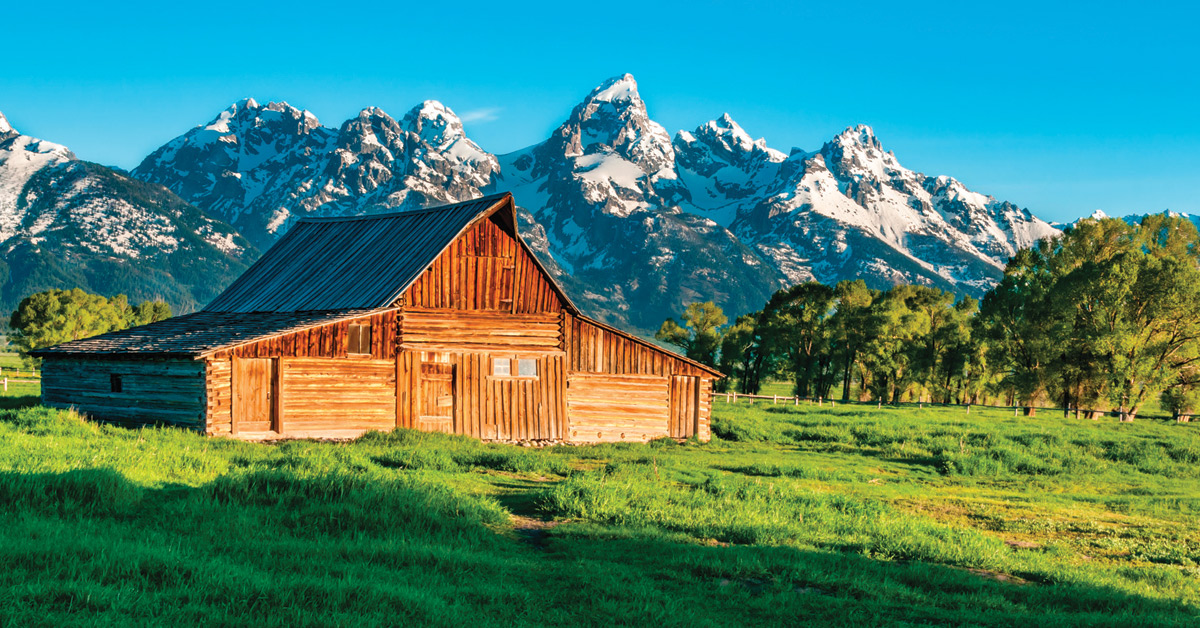College dropout, sure. Genius in a garage, definitely. But normally you don’t associate a tech startup with a potato farmer — unless you’re in Idaho and that farmer is J.R. Simplot.
Simplot, who died in 2008, made a fortune by developing a more efficient hog slop prior to the Great Depression. Later, he devised a way to dehydrate potatoes, earning a lucrative contract with the military, and then a method for freezing potatoes, making even more money from McDonald’s.
In 1980, Simplot became an early investor in Boise computer chip company Micron Technology. (Admittedly, twin brothers and two others formed the company in a dental-office basement, a quintessential tech-startup origin story.) The deal cemented Simplot’s status as one of the richest and most astute businessmen in American history.
Today, Micron has 37,000 employees and remains one of the largest companies in the world in terms of revenue. It’s one of a dozen Fortune 500 companies located in the Mountain Region of Idaho, Colorado, Montana and Wyoming. Other major companies in the region include grocery-store chain Albertsons (also located in Idaho and the largest company in terms of revenue in these states), as well as medical-services giant DaVita, television provider Dish Network and mass media and communications powerhouse Liberty Media, all located in Colorado.
 Much of the economic power of these four states, however, lies with farming and resource extraction rather than major corporations. Montana, for instance, ranked No. 7 in the nation in beef production in 2019. Colorado, Wyoming and Idaho came in No. 14, No. 15 and No. 20, respectively.
Much of the economic power of these four states, however, lies with farming and resource extraction rather than major corporations. Montana, for instance, ranked No. 7 in the nation in beef production in 2019. Colorado, Wyoming and Idaho came in No. 14, No. 15 and No. 20, respectively.
Idaho ranks No. 1 in the U.S. in potato production with about one-third of the nation’s crop. Colorado ranks No. 6 in potato production while Montana ranks third for wheat, producing 213 million bushels in 2016.
Wyoming led the nation in coal production in 2018 with 304.2 million short tons, far and away the most of any state, according to the U.S. Energy Information Administration (EIA). Montana ranked sixth in the U.S. with 38.6 million short tons, followed by Colorado in 11th with 14 million. Wyoming, Colorado and Montana each ranked among the top 20 states for crude-oil production as of April 2020, and each were top-20 producers of natural gas in 2018, EIA reported.
All four Mountain Region states have seen unemployment rates rise since the start of the coronavirus crisis, but each had lower rates than the nationwide clip of 11.1% in June 2020. Late this past July, each of these states ranked in the bottom half of the U.S. for sheer numbers of COVID-19 cases — Colorado at No. 27, Idaho at No. 37, Montana at No. 46 and Wyoming at No. 48.
 As of this past May, Idaho’s year-over-year home values had increased by a best-in-the-nation 11.7%, according to CoreLogic. Wyoming came in No. 2 with a 9.9% increase while Montana checked in at No. 8 with a 7.1% increase. Colorado also has experienced strong home-price growth, although CoreLogic contends that the Denver metro-area market is overvalued and due for a price correction.
As of this past May, Idaho’s year-over-year home values had increased by a best-in-the-nation 11.7%, according to CoreLogic. Wyoming came in No. 2 with a 9.9% increase while Montana checked in at No. 8 with a 7.1% increase. Colorado also has experienced strong home-price growth, although CoreLogic contends that the Denver metro-area market is overvalued and due for a price correction.
Real estate agents reported anecdotal evidence that large numbers of out-of-state buyers were looking for property this summer in Montana, Wyoming and Idaho. Agents in Montana said concerns about the coronavirus, as well as urban unrest, were reasons for the current surge.
Median home values in all four states were higher than the U.S. median of $248,857 as of this past June, according to Zillow. Colorado’s median price of $408,794 at that time was the highest in the region.
Focus: Gemstone production
The U.S. produces a wide diversity of gemstones and many varieties of these precious commodities are mined in the states of Idaho, Montana and Colorado. Somewhat surprisingly, gemstone production is a relatively miniscule industry in the U.S. with only $13 million produced each year.
The U.S. imports about $22.6 billion of gemstones per year, or 99.9% of the gemstones used by jewelers and other industries. About 250 mines are actively operating in the U.S., employing between 1,200 to 1,500 people, mainly in 13 states. Much of the mining is done by amateurs or rockhounds.
Production is so low due to the expense of opening mines, government regulations and labor costs, according to Geology.com. Still, Montana produces world-famous sapphires. Idaho, nicknamed the Gem State, produces star garnets and opals. Colorado, meanwhile, produces aquamarine, garnet and topaz, among other precious stones, and was the source of the largest cut diamond ever produced in the U.S.
What the locals say
“We are having an influx of people coming from every direction. They’re coming to Montana sight unseen, which we’re cautioning [that] maybe you should spend a winter here first before buying a house. Houses are going on the market and within a couple of hours, they have had dozens of showings. .. Bozeman has been a hot spot for people moving to the area for a while. With the pandemic, it has intensified an already very, very busy spring and summer market. We’ve never seen a market like this before. Homes are being built like crazy. Those contractors are working their tails off trying to build houses at a high-quality level.”

Colleen Wood
Producing branch manager, Fairway Independent Mortgage Corp.
3 Cities to Watch
Denver

The Mile High City really is 5,280 feet above sea level. The United Way, the largest charity in the U.S. by private donations, was formed in Denver in 1887. About 3.1 million people call the Denver metro area home. The largest employer in the area is Denver International Airport, one of the busiest airports in the world, with about 35,000 workers. Other large local employers include aerospace company Lockheed Martin, telecommunications company CenturyLink and financial-services company Western Union.
Cheyenne

U.S. Army Gen. Grenville Dodge established Cheyenne on July 4, 1867, one of many town sites planned along the Union Pacific Railroad. Cheyenne was named for the Great Plains tribe. Today, it is the state capital and largest city in Wyoming with a population of about 64,000. The largest employers in the area are a mix of government and health care entities, including the state of Wyoming with 3,750 workers and F.E. Warren Air Force Base with 4,200. Cheyenne’s median household income is $63,235.
Missoula

The second-largest city in Montana gets its name from a Salish tribe who called the area “Nemissoolatakoo,” or “river of ambush.” The city was founded in 1864 when trading company Worden & Co. built a sawmill and grist mill in the area. Missoula has a population of about 75,000 and the city’s largest employer is the University of Montana with some 3,600 workers. There also is a mix of health care, government and service-sector employers. The median household income in the city is $45,010.
Sources: Agricultural Marketing Resource Center; Cheyenne-Laramie County Corporation for Economic Development; Choose Colorado; CoreLogic; Destination Missoula; Drovers; Forbes; Funding Universe; Geology.com; KULR-TV; Metro Denver Economic Development Corp.; Micron; Missoulian; New York Times; Quartz; United Way; U.S. Bureau of Labor Statistics; U.S. Census Bureau; U.S. Energy Information Administration; U.S. House of Representatives; United Way; Westword; Wyoming Public Media; Wyoming State Historical Society; Zillow








